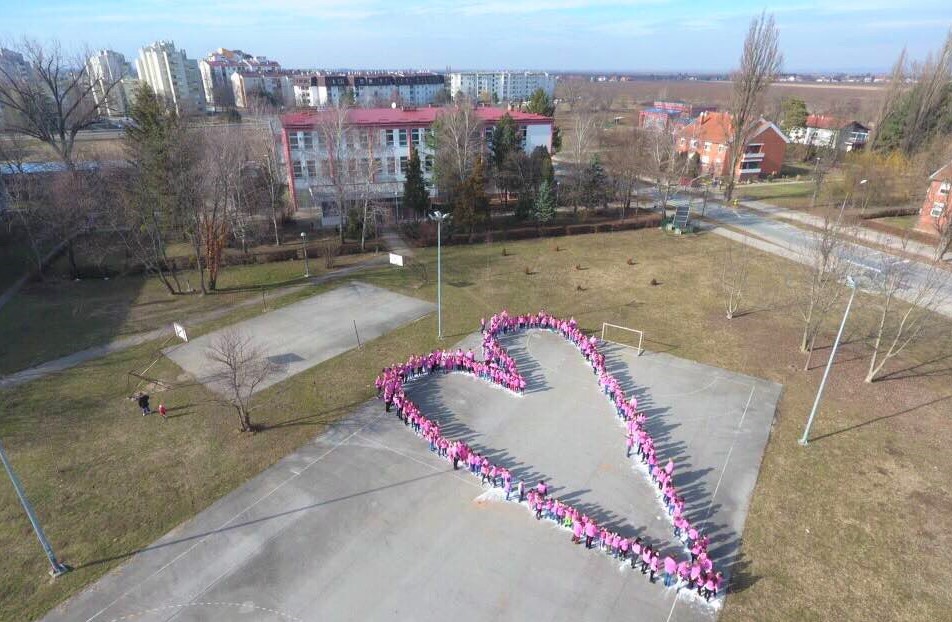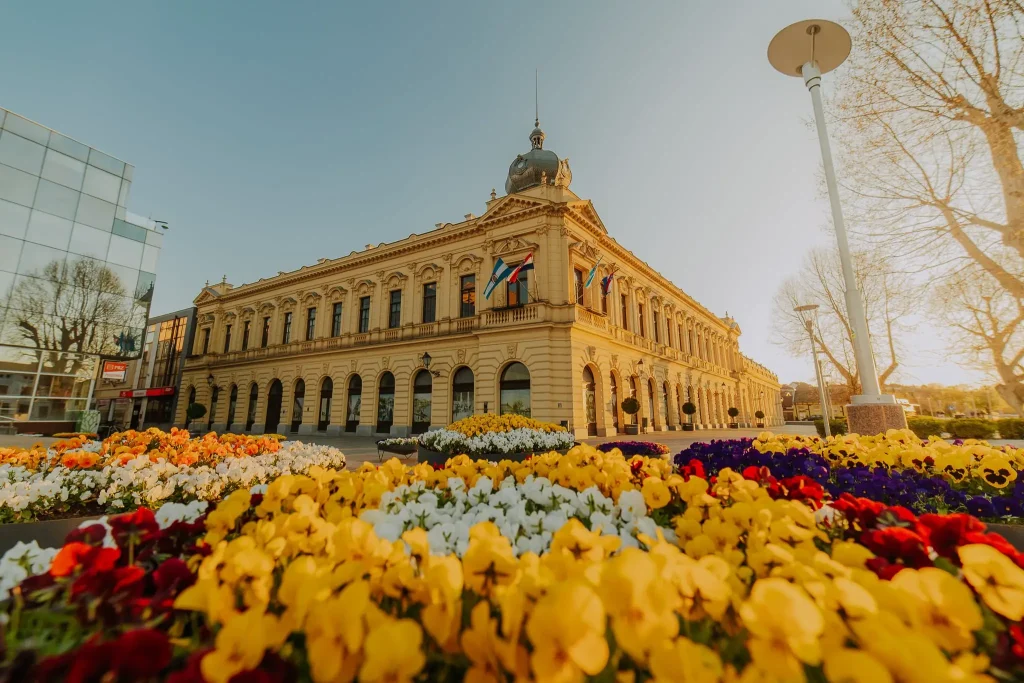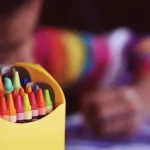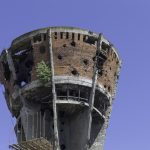Traditionally, this day is a bank holiday in Vukovar, with celebrations and events in the city centre. With the Svi zaJedno Hrvatsko Naj festival leaning onto Vukovar Day, the city becomes the site of culture, sports, gastronomy, music, and more, for over a week. And if you take a closer look, you will see that it’s Vukovar’s youngest who make the city come alive. The little ones are jumping with joy and running between the stalls, the decorations, and the popcorn vendors, and our high schoolers are even here to teach us something. And if you listen closely, you can hear them speak both Croatian and Serbian.
Courtesy of TZ Vukovar / Marko Balaži
This co-existence in Vukovar still sparks debate among those who know about its history, and curiosity among those who are yet to learn. On this Vukovar day, we decided to have a look at history in hopes of making a step in the right direction for our future. We went to schools in Vukovar, both primary and secondary, where we had a chance to speak to the headmasters and teachers. The guiding thought was the idea that the subject of history is a sensitive area, especially in Serbian minority classes. This question has been explored before, with varying conclusions, so we wanted to see where we stand in 2022. The outcome is interesting, but not surprising, refreshing, and yet completely normal.
The demography of Vukovar
Vukovar has historically been a diverse urban centre, whose population throughout the 20th century was made up of the Croatian, Serbian, Hungarian and German nationalities to varying extents, with the Serbian population steadily growing and reaching 25,5% in 1948 and 32,3% in 1990, whereas the German and Hungarian population significantly declined during the same period. In 1990, the Croatian population made 47,2% of its 44,639 inhabitants. It is important to note that the social structure of the city kept changing throughout the 20th century due to the Yugoslavian policies, as well as the fact that the socialist state discouraged expressing religious beliefs or national identity in everyday life. Our interlocutors who have lived all their lives in Vukovar shared that in pre-war Vukovar “you wouldn’t know other people’s nationalities or beliefs” (I.A., 68), “unless in a political situation, no one cared” (A.J., 63), “in everyday human lives it did not matter one bit, we all played together as kids, grew up together and watched our children grow up together” (J.G., 72). Their memories of the city make their faces light up and their eyes sparkle, and they happily share stories of life by the river, the best ice cream, friendship, and family. The things that mattered. Of course, the events of 1991 shattered that image of the city and it took decades to start even imagining something like that again.
“The Danube Bath”, courtesy of Vukovar Municipal Museum
Model A for the education of national minorities
Like anywhere else, the rights of national minorities in Croatia are emphasized and respected in all aspects of life. One of the areas serving as a constant source of inspiration for debate in Vukovar is schooling. In Croatia, schools follow a three-model system (A, B, C) with several additional programs (such as summer school ). In model A, minority language and writing systems are fully adopted, with the Croatian language taking an equal amount of school hours as the minority language. Model B uses both Croatian and minority languages, with social subjects taught in the minority language. Model C teaches minority languages and cultures as an additional subject, with all other instruction and teaching done in Croatian.
In Vukovar, models A and C are most often chosen by minorities, with model A being the most likely choice of the Serbian national minority. What this means is that schools following model A will often have students of the same age group take separate classes based on the chosen model (i.e. if they are a member of the minority group or not). The purpose of the three models is the preservation of minority languages and cultures with enough flexibility to accommodate for integration.
Peaceful reintegration of the Danube Region and the history moratorium
One of the conditions of the Serbian representatives in the peace negotiations of 1997 was that there was a moratorium put on the teaching of Vukovar’s recent history in national minority classes. The moratorium lasted 5 years and officially ended in 2003. From 2003 to 2022 it has been a rocky road, and there were numerous attempts to have a peek behind the scenes and see if the sensitive parts of history are being taught in minority classrooms. Sensationalist headlines would appear, stating that Croatian history is only taught over something like 3 pages in the Serbian textbook written in Serbian using the Cyrillic writing, that teachers deliberately skip and ignore the whole section, that they twist it, etc. Having spoken to headmasters, teachers, parents, and students, the truth is simple – it is highly individual, and if teachers feel strongly about the topic, they might be inclined to adapt their way of teaching. The opinions of parents are varying, some feel strongly, and some don’t, depending mostly on the generation they belong to. What probably sums it up best, are the words of the mother of a second-grader, stating that “we cannot avoid the topic, certainly not in 2022. No matter which classroom my children attend, they will learn about the events and hopefully, they will be able to form their own opinions. What we want for them is to live a normal life and grow up in a society of equal opportunity”. (S.G.)
The headmasters of primary schools and secondary schools all agree that they are currently facing much bigger issues, some caused by the pandemic, some by the modern way of life, but that history on this or that side has become a rather dry topic which is not in their control anyway. They emphasize that having started from completely separate classrooms, teachers, subjects, and extracurricular activities, students these days all play together, attend workshops and sports clubs, take part in competitions and plays, and even go on excursions, exchanges, and cultural events together, forming separate groups around things like celebrity crushes, candy or games, and not nationality.
Like it or not, Vukovar is healing as nature always finds a way
The honest truth is it has been 30 years and time and nature have started doing their thing. A change of generations has happened. Make no mistake, what happened in Vukovar in 1991 were inhuman atrocities that can never be denied, and there is a lot of injustice still making it that much harder even after 30 years. Unfortunately, those who deserve punishment might never be punished for the crimes they committed but let us not punish those who had nothing to do with it, those who are at the same time the future of our city. Children are children, they might grow up to become assholes or they might go on to save the world. They might learn history in Croatian written in Latin writing, or that could be Serbian in Cyrillic writing. Chances are, they will find it equally boring and would much rather play than study. Some might be fascinated by it. They are all different. We are all different. Maybe it’s time to start learning from the young ones and celebrate diversity while working together for a better future for all of us. 
National day against peer violence, courtesy of OŠ Siniše Glavaševića
For more, make sure to check out our dedicated lifestyle section.










